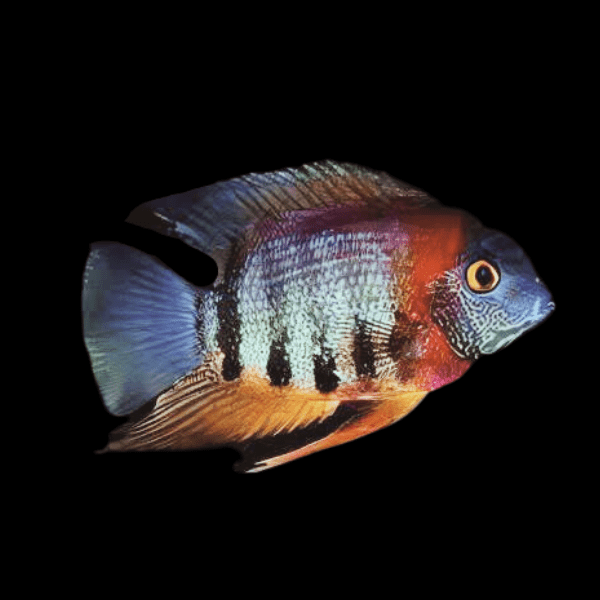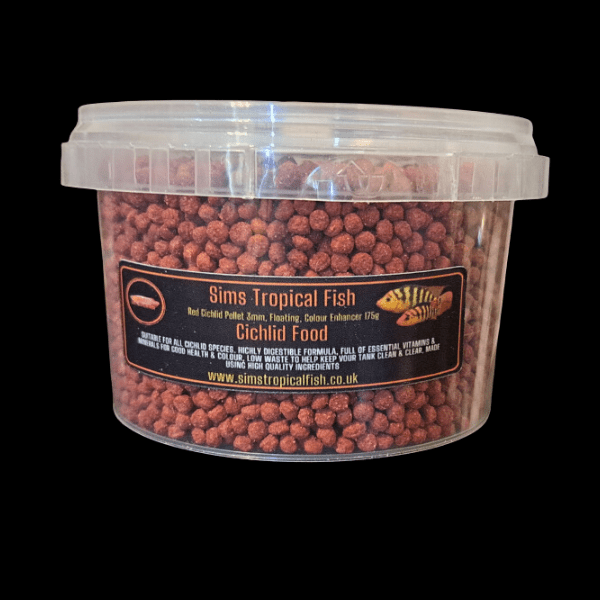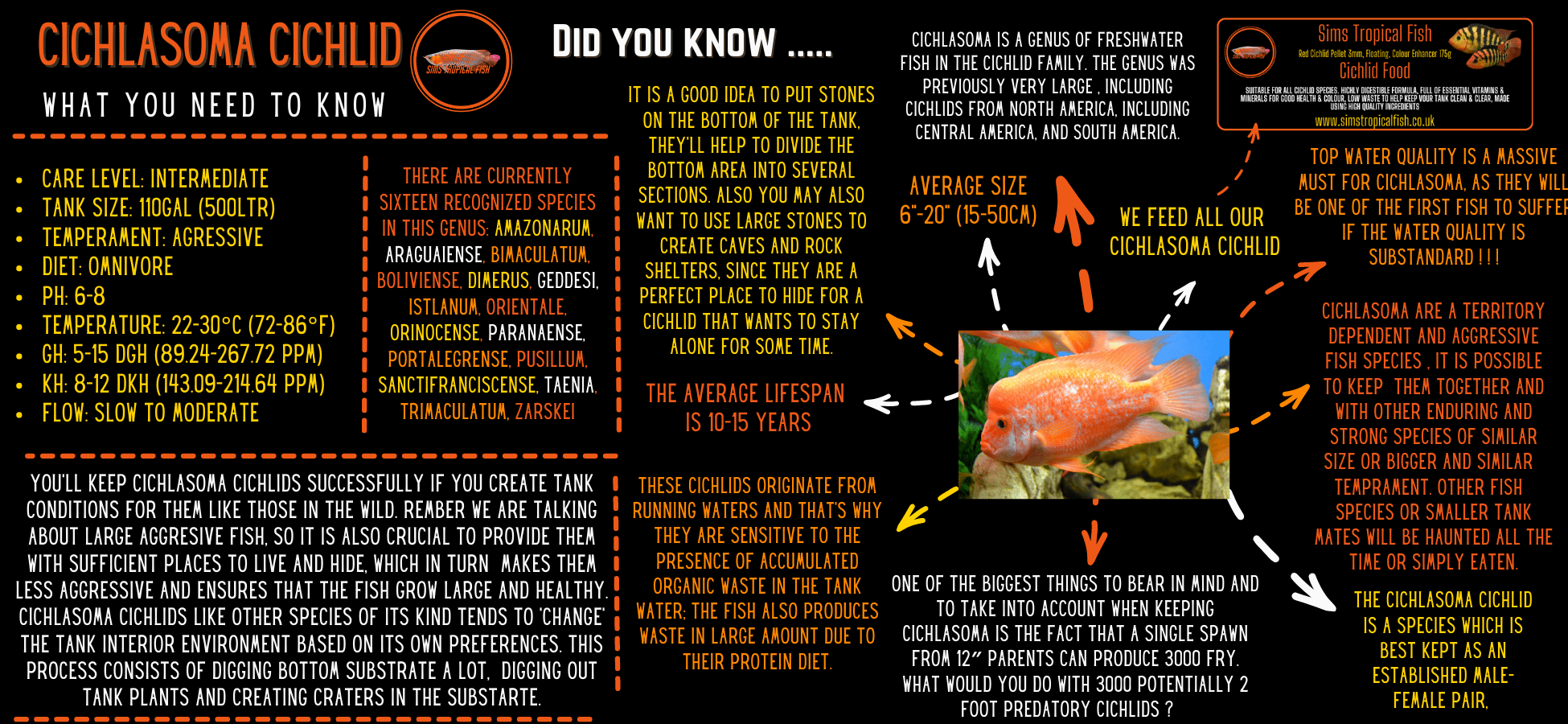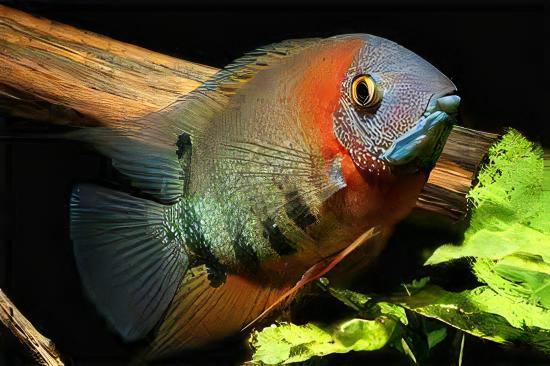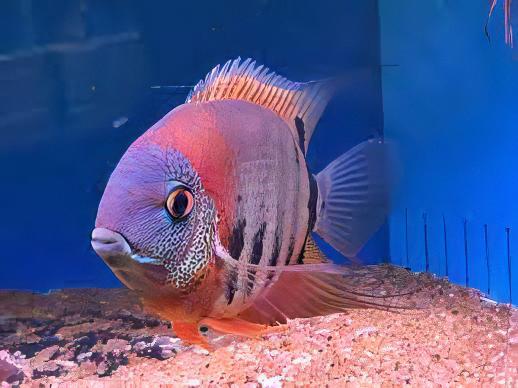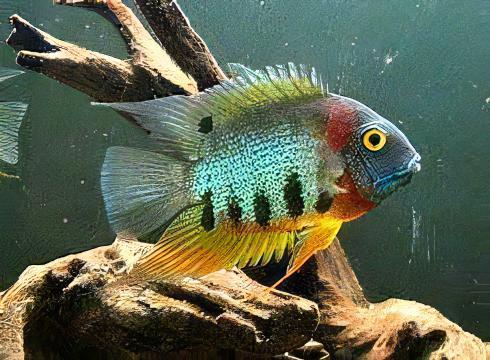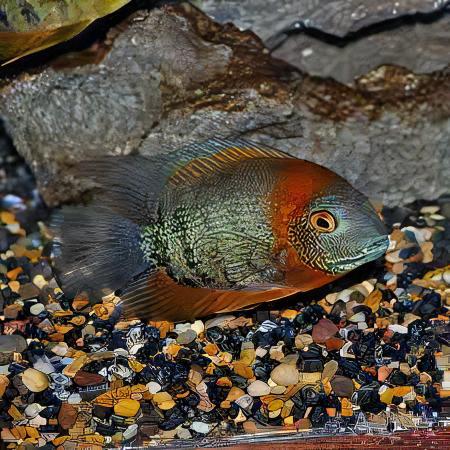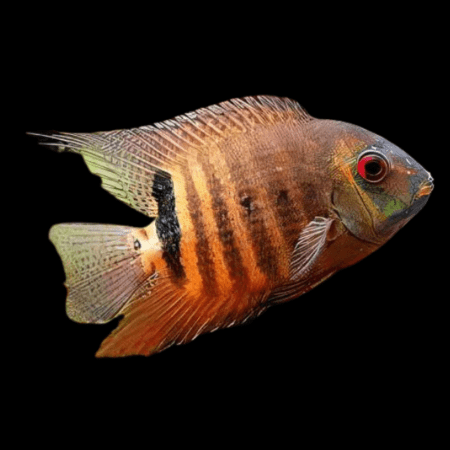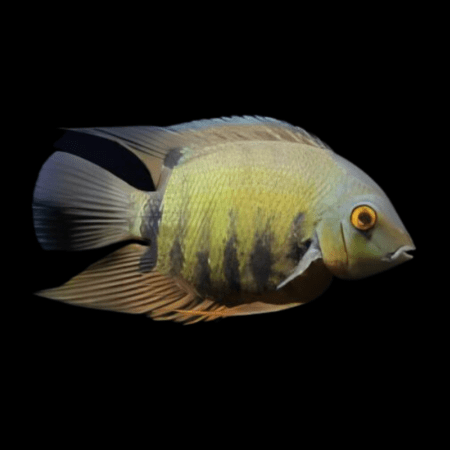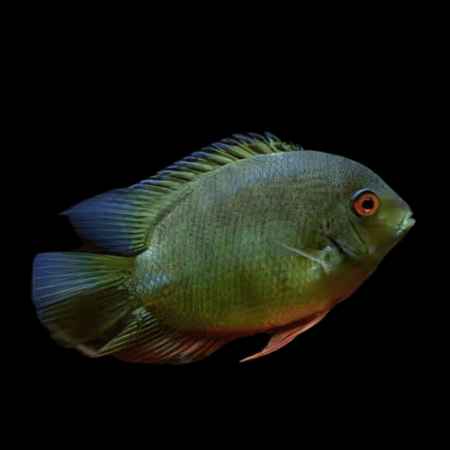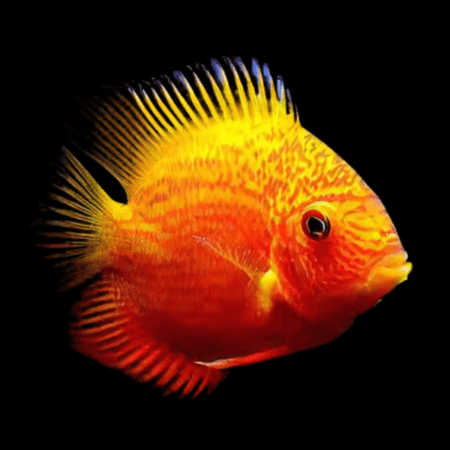Description
Red Neck Rotkeil Severum Heros Rotkeil
Overview
| Distribution | Peru |
| Maximum Size | 20cm (7.9″) |
| Temperature | 24-28°C |
| Water Parameters | Soft and slightly acidic. pH: 6.0-7.0, dH: up to 12 degrees. |
| Compatibility | Community with no small fish |
| Lighting | Dim-medium |
| Sexual Dimorphism | Mature males usually have more pointed dorsal and anal fins, and develop strong reticulated red markings on the gill covers. |
| Feeding | Flake, granules, cichlid pellets and frozen foods |
Description
Care
The Redneck Severum is an as yet undescribed species known only from parts of the Amazon basin near to Iquitos, northern Peru. Here, it inhabits the slow-moving parts of rivers that are thick with marginal vegetation and submerged tree roots. The aquarium should be spacious, with a soft sand substrate and plenty of hiding places/visual barriers created using driftwood, rocky caves, and robust planting such as Java Fern or Anubias sp. tied to the decor. Filtration should be efficient but water movement not too vigorous, and small frequent water changes will help keep nitrate to a minimum. Redneck Severums are fairly easy-going for a cichlid of this size, and as such can be kept alongside other fish of similar size and temperament. Males can be sexed by their cheek markings, which are absent in the smaller females. They may be maintained in pairs or good-sized groups, but should a pair choose to spawn in a community setting, they will become much more aggressive towards the other fish. However, this should not present too much of a problem in very spacious aquaria. After a time, these fish learn to “recognise” their owner and often come to the glass to greet them or wait for food. May also be seen on sale as the Red Shoulder Severum.
Feeding
Omnivorous and will accept most aquarium foods offered. Try to keep it varied with good quality carnivore and herbivore sinking pellets/sticks, flakesand a mixture of frozen foods such as white mosquito larvae, bloodworm, vitamin-enriched brineshrimp, Mysis, krill, and chopped prawns, along with some fresh vegetable matter. Will avidly consume soft-leaved plants.
Breeding
A breeding aquarium should be set up with soft, acidic water and the pair acclimatised across. The temperature should be carefully raised to the top of the preferred range. Some flat pieces of slate should be provided, which the fish will clean prior to laying the eggs on them. The female usually deposits between 200 and 1000 eggs onto the rocks, and these are then vigorously defended by both parents. The eggs should hatch after 48-72 hours, and once free-swimming the parents will be seen herding them to different areas or pits dug in the substrate. The young can be offered finely powdered flake foods and microworms. It is not unusual for parental care to last up to 6 weeks.
